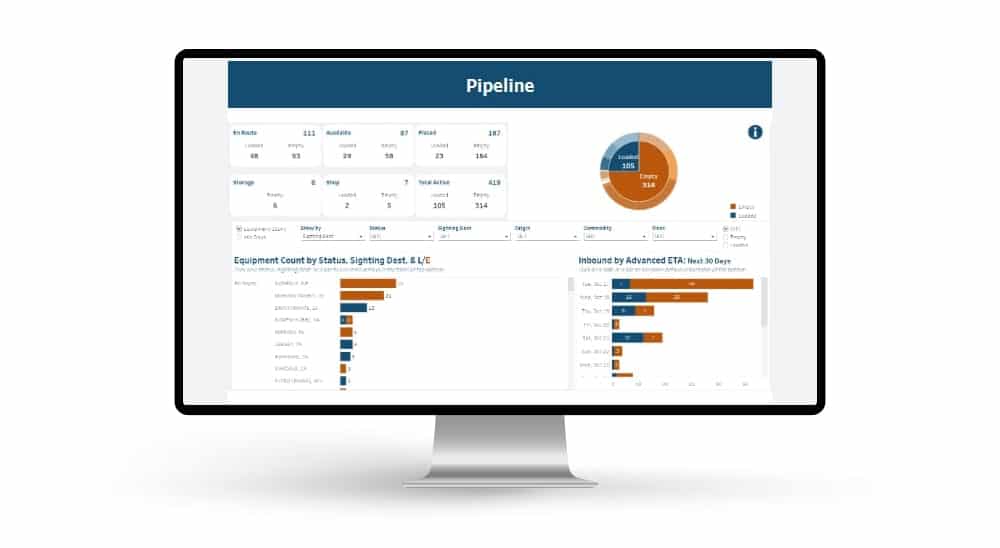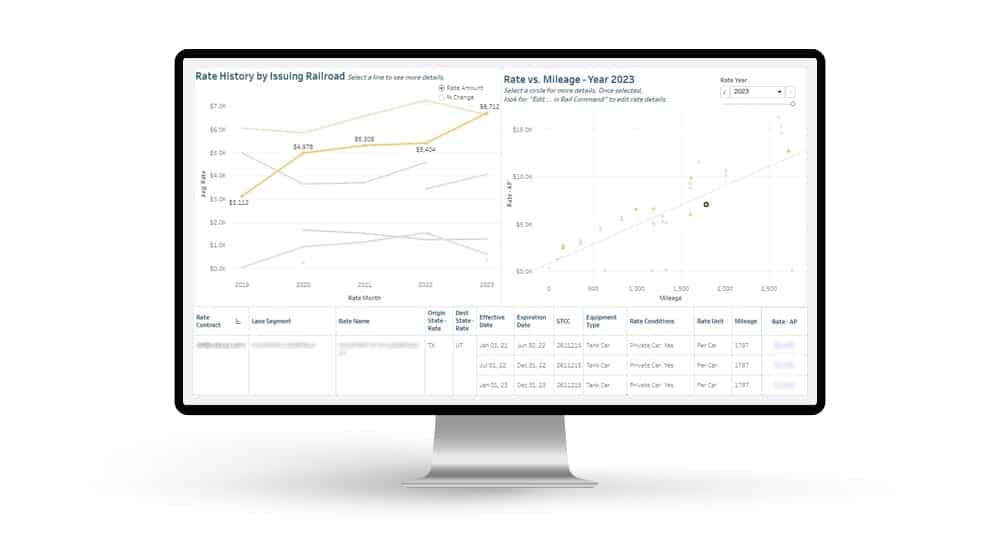You want to run an efficient short line railroad, and making sure operations run smoothly takes time and attention. In between these essential tasks, it can be difficult to find time to grow your business and make sure you’re getting exposure. Furthermore, finding marketing strategies that resonate with your specific customers can be even more challenging. Let’s take a look at a few marketing ideas for short line railroads to help jumpstart your strategy.
5 Marketing Ideas for Short Line Railroads
1. Use Directories
Customers searching for logistics solutions might not know where to look, especially when it comes to rail routes. Many shippers and logistics experts have to shuffle a variety of tasks and challenges, and they may not have the time or resources to do the necessary research on the different options available to them.
Directories showing available routes, rail carriers, stations, junctions, transloading services, and more make the logistics planning process much easier. Shippers using RSI’s Rail Impact software can see different routes available to them and even conduct cost analysis and comparisons with a click of a button. Putting your short line railroad on this directory and similar directories will help busy logistics professionals find your short line faster.
See how data can improve negotiations, operations and future planning for short line railroads with our free guide ›
2. Update Your Website
While the growth of online shopping and digital research for B2C consumers is well-known, it’s less known that this growth is mirrored in B2B industries. The internet has become the go-to resource for information-gathering of all types, including B2B buying decisions. In fact, 62% of B2B buyers say they can make purchasing decisions based on digital content alone. This means digital assets like your website are crucial marketing tools. If potential customers research your business and can’t find, can’t navigate, or don’t understand the purpose of your website, it’s a red flag. This may be a sign to many buyers that your railroad isn’t keeping up with the times or isn’t embracing necessary changes.
Creating a modern, useful and navigable website is one marketing idea for shortline railroads that can pay off quickly. Your website doesn’t have to be huge or filled with lots of features. Prioritize clarity; make sure your website shows what your business is, what it offers, where it operates, and how potential customers can contact you. Make sure the layout is clean and easy to read. Ask current customers or others in your industry to test your website before you launch. If your testers aren’t sure how to use your website or they have to hunt for the information they need, make changes.
3. Showcase All Services
Are customers aware of all the services that you offer? Many customers and potential customers may be aware of your transit services, but in the dark about other services you may offer, such as railcar maintenance, storage, or leasing. If this is the case, you’re leaving money on the table.
Make a list of all the services you offer, and current customers who use each service. Next, consider potential customers who might benefit from these services. Look closely at customers who are already using two or more services; are they aware of other services you offer? Could these other services be useful for them? This is one marketing idea for short line railroads that can help to improve your exposure while also improving overall customer happiness and satisfaction.
4. Strengthen Relationships
When most people think of marketing ideas, they think of ways to reach new customers. However, existing customers are generally more valuable. This is especially true for customers who are very loyal and have been working with you for a long time. Finding ways to add value for your customers can encourage your customers to use more of your existing services (see the previous section) and also encourages positive word-of-mouth marketing.
Talk to your customers about their questions, concerns and challenges. You may already have knowledge, data and services that can help to solve these. For example, if your customers have concerns about their rail rates and they’re unsure how their rates rank compared to competitors, walk through a cost and revenue analysis. Use benchmarks and costing tools to show if rates are disproportionately high. This can open avenues for negotiations with larger railroads.
When you go above and beyond for your customers, they’re more likely to reciprocate. If you’ve saved your customers money or helped them to solve a problem, talk to them about creating a testimonial or case study that can be compelling to other customers. Ask if you can use them as a reference, so other customers in their industry can come to them when they have questions about your services. Keep these assets and connections in mind when you’re reaching out to new customers.
5. Consider New Markets
After taking a closer look at your current customers and what services they’re using, you may have already identified opportunities for growing your business. Build this potential growth outwards one step further. Instead of considering which additional services your current customers might use, consider new customers in similar industries who might benefit from these services.
Think vertically and horizontally. For example, if one of your long-time customers frequently ships grain products, there are likely to be other grain producers or processors located nearby. Map out similar facilities near you, and consider how you might offer rail transit, maintenance, storage or other services to them. Or, map out other processing facilities up and downstream, from facilities harvesting raw grain to those processing wheat mids or straw.
Some of the customers you map out might not seem accessible to you at first. However, awareness of transloading facilities can sometimes reveal alternative routes. Shippers who are struggling with high rail rates on captive routes may be particularly interested in alternative routes with your short line, and more open to starting a conversation.
These marketing ideas for short line railroads are just a starting point. Different short line railroads provide many different services and work with many different customers across a wide range of industries. Directories, mapping tools and data visibility can help you connect with customers who may be seeking your services right now. Take a look at Rail Impact to see the tools and data available, and see how you can improve your marketing strategy.
See how data can improve negotiations, operations and future planning for short line railroads with our free guide ›



 Automated exception reporting of the railcar tracking data makes it easy to identify and troubleshoot jeopardized shipments, thereby enabling you to provide better service to your stakeholders.
Automated exception reporting of the railcar tracking data makes it easy to identify and troubleshoot jeopardized shipments, thereby enabling you to provide better service to your stakeholders. Receive notification of pending rate expirations. Tariff changes and fuel surcharges can be automatically updated.
Receive notification of pending rate expirations. Tariff changes and fuel surcharges can be automatically updated.